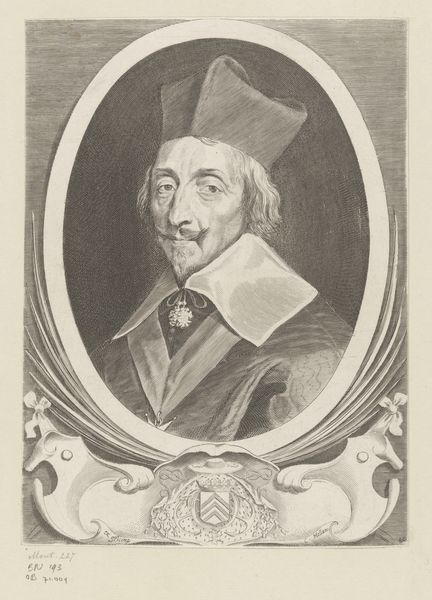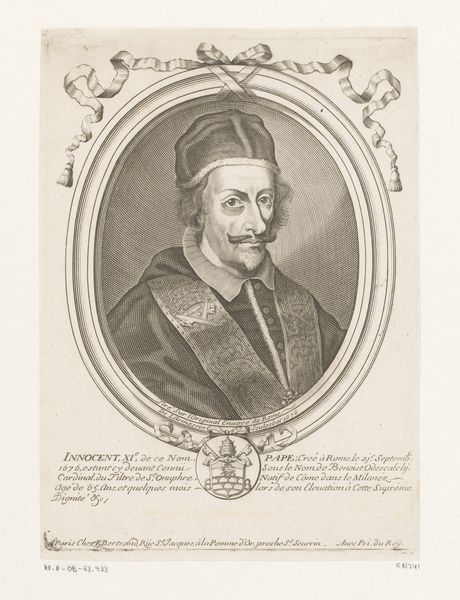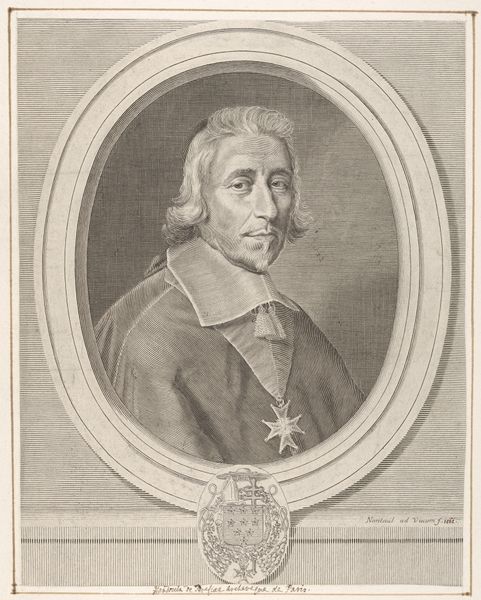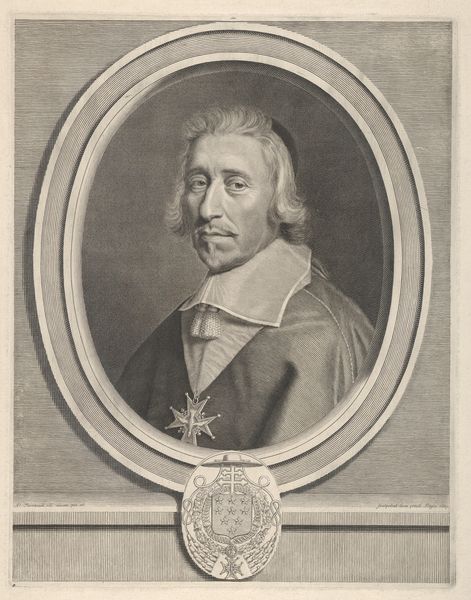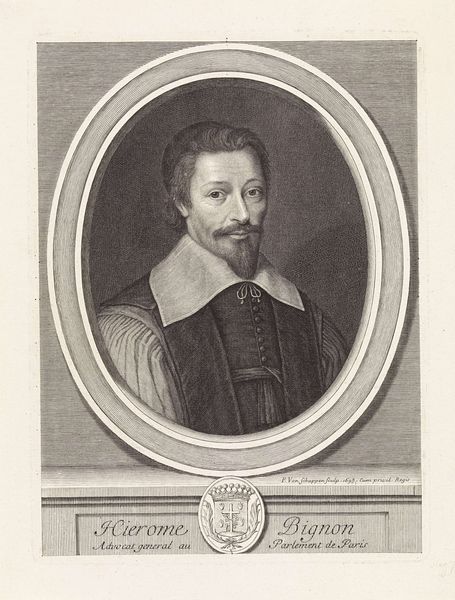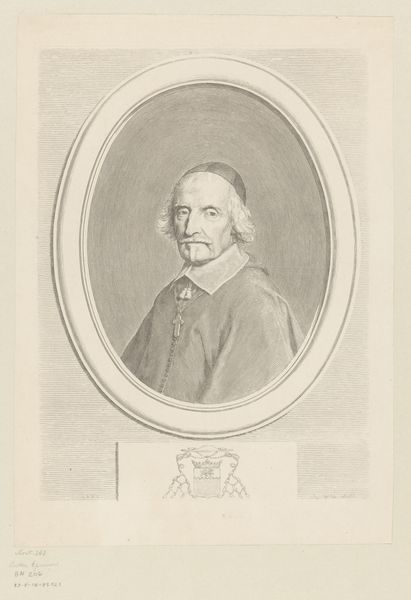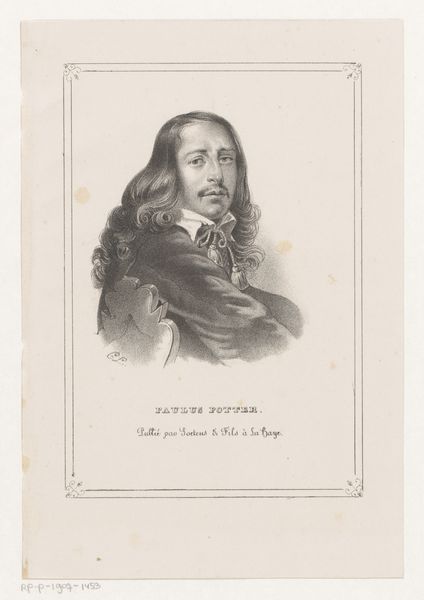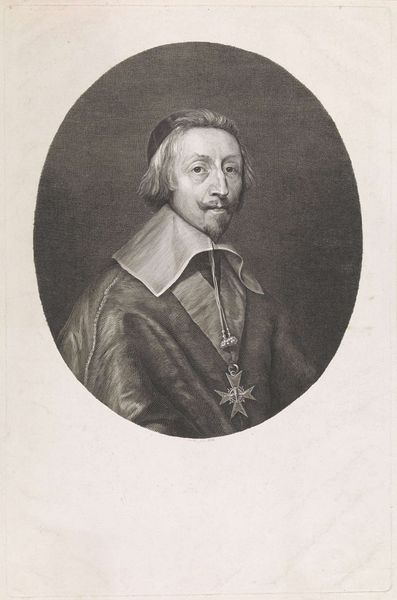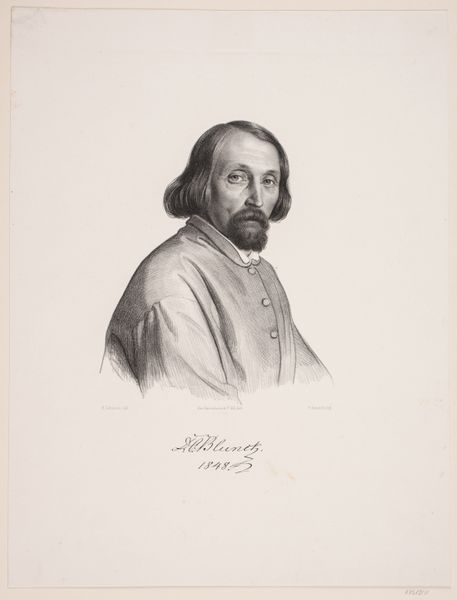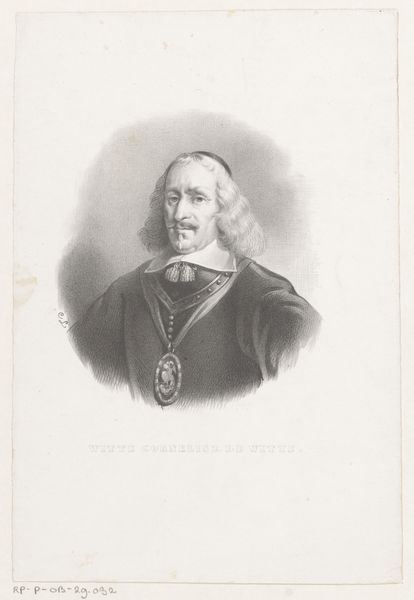
drawing, pencil
#
portrait
#
drawing
#
pencil drawing
#
romanticism
#
pencil
Dimensions: height 474 mm, width 318 mm
Copyright: Rijks Museum: Open Domain
Editor: This is a pencil drawing of Armand-Jean du Plessis, the Duke of Richelieu, by Nicolas Maurin, created sometime between 1825 and 1842. There’s something very composed and formal about it, almost intimidating. What can you tell me about it? Curator: It’s impossible to look at this image and not consider the weight of power, isn’t it? But what I find fascinating is thinking about how identity is constructed through portraiture, especially for figures like Richelieu who wielded immense political and religious power. How much of this image is a reflection of the man, and how much is carefully crafted propaganda? Consider his gaze. Is it direct, confrontational even? Editor: It is a very direct gaze. There’s definitely no vulnerability. Curator: Exactly. And what does that communicate in the context of 19th-century Romanticism, with its fascination for powerful individuals and dramatic historical events? How does an image like this reinforce or challenge the prevailing narratives around power, class, and even masculinity? The clothing, the adornments...they all perform a very specific role. Editor: I hadn’t thought about it as performative. So, it's not just a portrait; it's almost a carefully staged presentation of authority. Curator: Precisely! And how does knowing this was made so long after Richelieu’s death shape our interpretation? Does it idealize a historical figure, or does it perpetuate specific power structures through its careful visual language? Editor: This makes me think about who has the power to shape these images and how that impacts our understanding of history. It's much more than just a drawing of a man. Curator: Indeed. By examining the layers of historical context and social power embedded within the visual choices, we gain a richer, more critical perspective. Editor: I'll definitely look at portraits differently from now on.
Comments
No comments
Be the first to comment and join the conversation on the ultimate creative platform.

